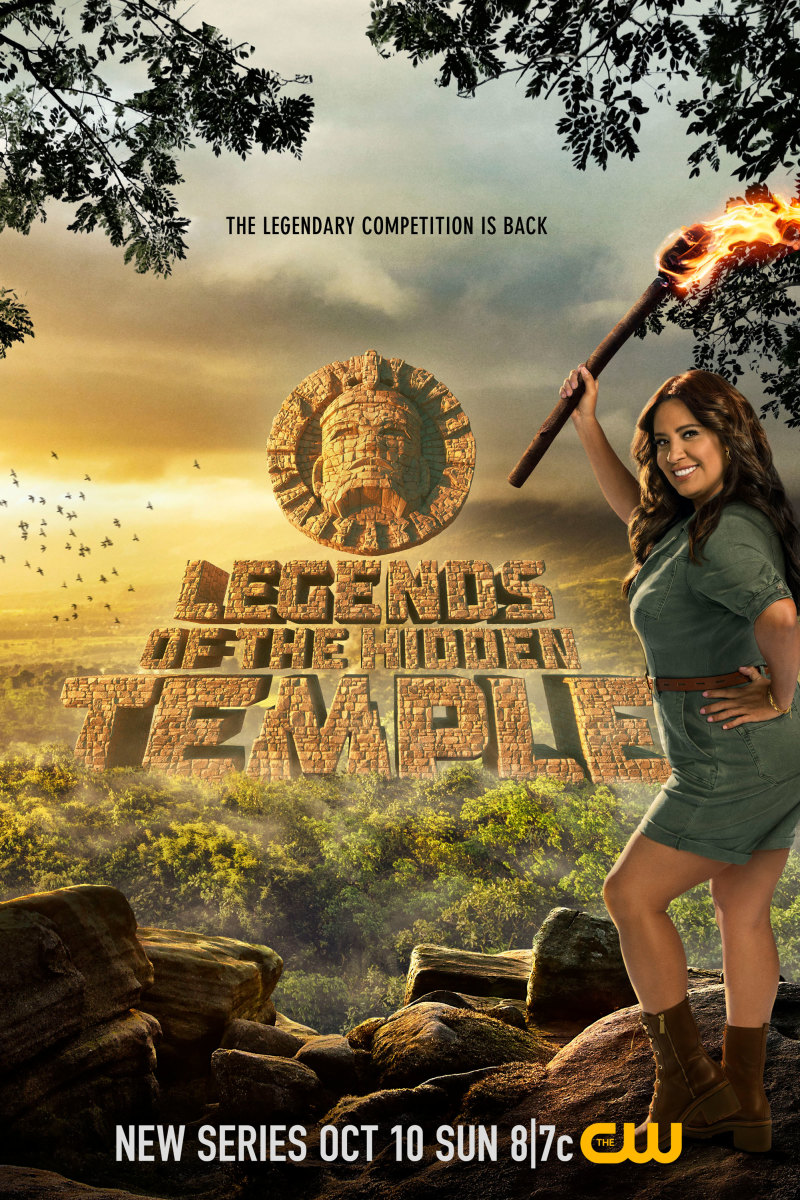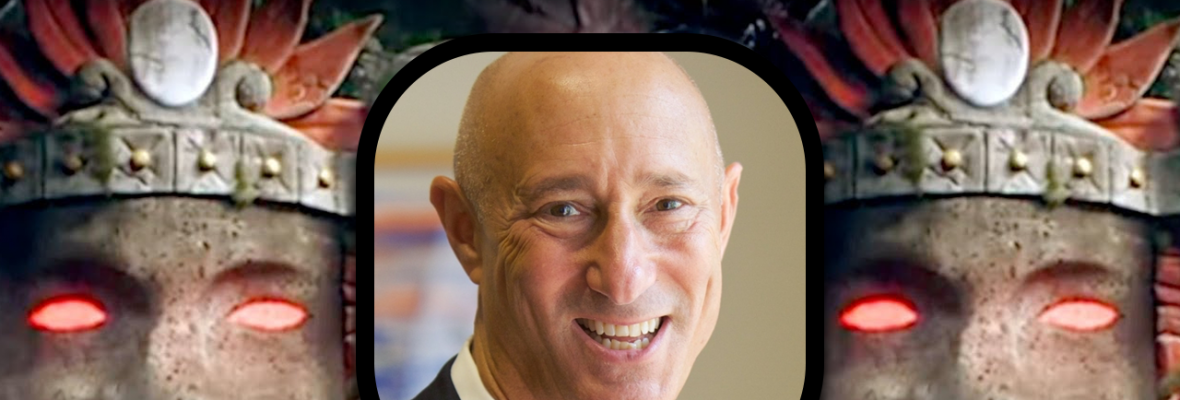
Scott Stone on Quibi, Cristela and Temple Guards
Cory sits down with Legends EP Scott Stone to talk about the upcoming CW revival.
Legends of the Hidden Temple is returning to our television screens in October, reimagined for audiences of all ages but starring adults. I sat down with Scott Stone, executive producer of the original Nickelodeon production, and asked him about how Legends got a reprieve on television, the sensibilities regarding having adults playing the game, and why the temple guards are so scary-looking!
This whole Legends of the Hidden Temple thing felt like it came out of nowhere. Correct me if I’m wrong, but it was announced to be on Quibi, and then Quibi died. Everything on Quibi was supposed to be 8 minutes and only on the phone. If you can share, what was the plan for Legends in 8 minutes?
Well, first, let me answer your first statement with an answer. Sure. And then I’ll jump into the Quibi of it all. I can give you a little bit about him, but I am still under a Quibi NDA.
This show has been talked about as a reboot for at least 10 years, and in 2016, Nickelodeon did make a movie. I don’t know if you’ve seen the movie yet—it’s on Netflix, you can watch it—and I helped them out with the movie a little bit. We talked about, at the time, bringing the game show back.
[Nickelodeon] learned fairly quickly in 2016, that if they’re going to bring the show back, they ought to bring it back as a game, not as a movie—as good as the movie was! Because, you know, even though Disney is making a great business out of bringing theme parks to life, this would kind of require a different approach. So, they made it into a TV movie for families. It was really pretty good. I thought it was well done. It brought up the whole discussion again in 2016 about us doing the show. So we were talking to Nickelodeon about doing a kid’s version. Frankly, we were talking to The CW five years ago about doing an adult version [with] a wonderful executive at the CW named Cyle Zezo. Cyle is a passionate fan of the show. I was actually over there talking to him about a different show. And he said, “I want to talk about Legends of the Hidden Temple!” So we talked about it for quite a while, and he asked me to envision what it would be like for adults. I sort of gave him what I thought was in my world the “killer app” version, if that term still exists.
And he loved it. So we talked about doing with them for a while. And then there were some small political issues with CBS and Viacom that you might have heard of—that had nothing to do with the CW—that put [Legends] on the back burner. Quibi stepped in, because they’d heard about it and said, “hey, you’re not doing it for the CW right now? Can we do it?” We quickly redeveloped the show from a one hour concept to an eight minute concept, which I’ll be happy to tell you about.
I’d love to hear what gets cut from one hour to eight minutes.
Not as much as you’d think!
Oh!
When Quibi got COVID, Cyle called me back and said, “It’s a new world over here. Can we talk about doing [Legends]?” It was right around the time that COVID was about to lift, we thought. And I said, Okay, great. So we went back to Cyle, and he’s has such passion for the show that it was a no brainer.
We actually had three offers from three different networks after Quibi. I won’t name the other ones, but I will tell you, it was a highly competitive situation. What was great about it is the announcement that Quibi made brought up all this groundswell of, “Wow, that’s really cool. That would be really interesting for us.” The show has so many different elements to it: it has the role-playing element, it has the game element, it has the competition element, it has the historic and informational element. So there were a lot of people interested in it. The CW stepped up and said, “Let’s do it here.” And we said, “You have the heart for it. We’d love to make that happen.”
It’s nice when you have an exec that really believes in the project. I know at ABC, with Rob Mills, Rob is one of those champions of game shows, too; when he stands behind a game show, he throws everything at it. So having that support at the CW is probably really nice to have.
It is, yeah.
From 2016 to now, there was COVID, there was a massive shift in streaming and all that, you know, there’s a giant change in the industry. So from then to now, Between then and now, Nickelodeon revived Double Dare but targeted towards kids. They also took a very similar show to Legends of the Hidden Temple in The Crystal Maze–they brought that over from the UK and they give that the good old college try as well. So what was the impetus then for targeting the CW version towards adults: was it really just the opportunity that the CW gave you?
Frankly, it was always my hope. I still think that this is a world where kids will love this show. I think the sweet spot for the show is fans of the show when they were kids who now have kids. I have an 18- and a 20-year-old kid who are big, big fans. The role playing aspect of [the show] is big for them too. I think we have a pretty broad demographic for the show. But if you follow Nickelodeon, you know there’s not a ton of kids game show business right now. And they do have a right, frankly, if the show’s a hit, we’ll do a kid’s version for Nickelodeon. If the streaming world is taking the adult business and put it on some kind of steroids, the kids’ business has gone kind of the opposite direction, because kids are watching a lot of Netflix and YouTube and streamers, and they’re not watching a lot of traditional cable. It never really was a kid’s play for me thinking about bringing it back, it was always about bringing it back as an adult show.
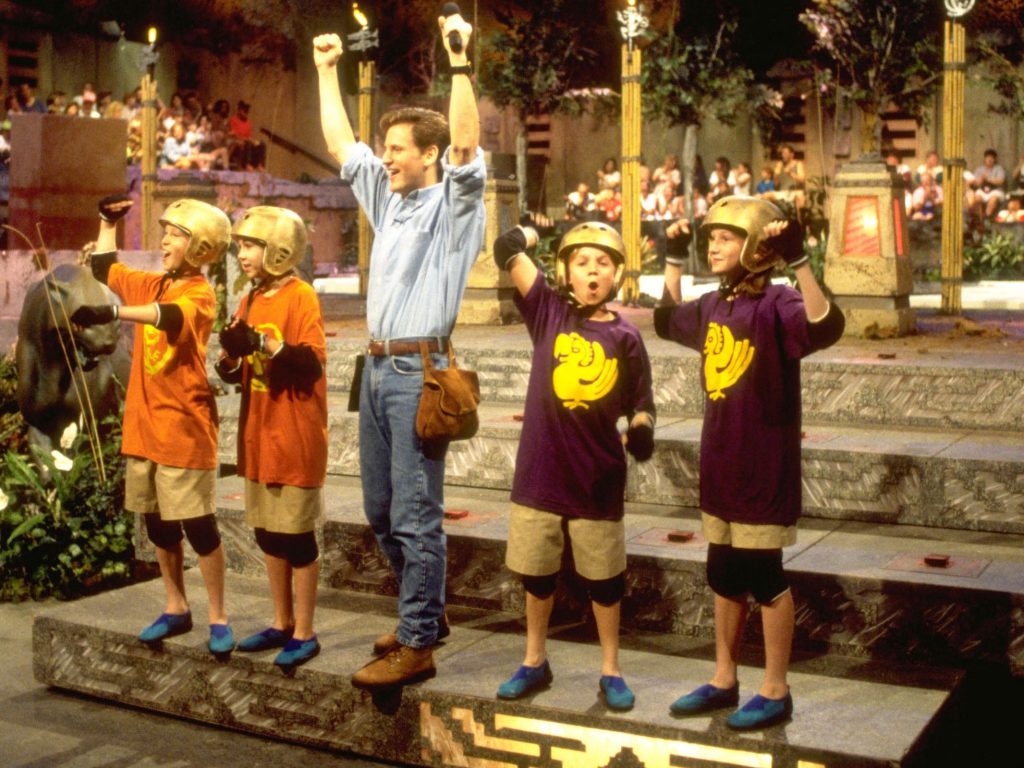
I have a lot of fond memories of Legends. I remember when I was a kid, we had a jungle gym outside of our school, and I would pretend that I was doing a Temple Run. I had a lot of really good memories of legends. So what were the what were the like the must-haves that the revival needed to have? Obviously Olmec—we’ve seen him in the trailer—we’ve got the teams and their colors and their icons, so the nerds are happy about all that dumb shit.
Oh, that’s not dumb shit, that’s merch!
You’re right! That’s true. Is there official merch planned? I’ve seen these bootleg blue Barracuda shirts for years on eBay.
Yeah, if it’s a hit, there’s always merch planned.
Everyone, watch the show so I can buy an official Blue Barracudas shirt.
Actually, for me that one thing that I’m holding out hope for the real success is: I want to do a national tour of a traveling escape room Temple Run.
Ooooooooh. Going back to the Crystal Maze, they had a live Crystal Maze experience that you could go to.
That’s how they rebooted the show.
Right!
They taped the Live Experience and re-did it from there. If we do it right, it’s a bus-and-truck tour with a big giant Temple.
Olmec, the Temple Run, what else was absolutely vital to the show’s DNA to bring back?
This is bringing it full circle back to the Quibi discussion. This show, for me, has always been a hero’s journey story. The DNA of [Legends] were in two of my favorites when I was younger (not a kid) in Indiana Jones movies, and in The Legend of Zelda, which is the only real video game—other than Candy Crush and Blossom Blast, which keep from being bored—that I really, really loved and still love. I still love all the new upgrades on The Legend of Zelda.
For me it was about, can you put yourself into that hero’s journey, Joseph Campbell style, and let you be a real player in a live-action video game? So that had to stay; that whole hero’s journey, where the contestants really were the heroes in the story. And I don’t care whether it’s an eight minute format, a 22 minute format, or an 42 minute format, which is where we are now, right? That hero’s journey was sacrosanct.
You’re going to find that in doing that, the format of the original show, which you know, I had two partners in it, David Stanley and Steven Brown, and it was a really good and a great team of development folks. I was even talking about this this morning. If I asked you to define this show, what would you call it? What genre of programming?
[pregnant pause] Oh. [another pregnant pause.] that’s a good question. In the—in the realm of game show sub-genres… um, outside of just calling it “a kids’ show” because it’s not anymore—that’s a good question. [surprised sigh] Ooh, I never thought of that. It’s mostly a physical challenge show? But there is the there’s the trivia aspect, the memory aspect of…?
Which is not even true! There’s trivia in the show now—we added some historical trivia to the show. There is the memory game Q&A part. In this version, [teams are] actually performing as a role-playing game where they are playing characters in the story. In the original game, we were like, ‘you’re being Amelia Earhart now and you have to go get the lucky pig and retrieve it from the plane.’ Right? So there’s a role playing element, right? There’s the game element. There’s the challenge element. There’s the comedy elements there, there’s the escape room element, there’s the jump scare element that you so aptly pointed out in the trailer of the Temple Guards.
I’m proud of this, but I’m not saying this in a in a prideful way: It is kind of an iconoclastic show, in that you can’t categorize this show as a game show, or challenge show or competition shows.
And the perfect example is when our insurance company quoted us the same quote that they did for Wipeout. And I said, “I don’t think you’ve ever seen this show.” We’re not people in the nuts. We’re not knocking them off of things. We shouldn’t pay that kind of premiums! If we have one person that needs to go to our medic, that’s a lot for us. We’re not sending anybody to the hospital. Knock wood.
True to form, we didn’t—actually, one person in the art department cut himself with a saw, I think. But other than that, I think don’t think we sent anyone to the hospital—even in COVID.
Well, hey, I mean, you’re doing better than Ultimate Slip and Slide.
Actually—little known story. They were the mountain over from us in Simi Valley…
Oh no.
…when we were shooting right when they did that. And yes, oh, no, is exactly right.
Let me come back to, what did we have to keep? We had to keep the hero’s journey, which meant that when the format… why mess with the format that works? If Rob Mills has taught us anything, it’s don’t mess with a hit format. Right?
Add to it, but don’t change it.
Right, add to it up the stakes, make it a little more exciting, cast it properly, host it properly, and take the pieces that work and elevate them. So I think when you see the format for the show, you will see that we basically did that. We kept almost everything from the original—actually, I think we did keep everything from the original—in the same format: you know, the Moat Crossing, Steps of Knowledge, Temple Games, Temple Run.
All the same, in a completely different styles, different lengths of time. The big thing that we changed is, instead of doing each episode about a historic figure, like Benjamin Franklin’s kite with the key, right, we picked historically, important legendary stories of different cultures around the world, and we use them as the heroes’ story within our heroes story.
So as an example, [one of the episodes] that we’re finishing is about the story of The Goddess Pele, who was the Hawaiian goddess of volcanoes and fire. We can’t tell her entire story, but we tell a big important part of her story. And the other people, the other gods and humans in her legendary tale—beginning, middle and end—and our contestants are playing parts in the story throughout the hour.
I like that. I think that’s a good shift, moving it into 2021 in terms of just, you know, expanding the breadth of history and knowledge.
The other thing that allowed us to do to “adult it” as well is, if you know anything about legendary stories, including those in the Hebrew Bible and the Christian Bible, there’s a lot of killing, sacrifices, adultery, comedy, drama, familial hatred—it’s all there. I like to describe it as kind of graphic novel-izing Legends of the Hidden Temple.
This is going to be for the nerds. Where is Kirk Fogg?
You mean right now?
This very second. [laughs]
Well, according to TMZ, he hangs out at Ralph’s a lot. [laughs] Kirk and I text and talk quite often. As you know, he’s not the host of the show, right? I can’t reveal whether or not you will be in the show somewhere. [winks obnoxiously] But suffice it to say, Kirk is a very important part of the legacy of this show, as is Dee Bradley Baker. It was important for us that we went forward with Kirk’s blessing in his involvement in some way, or form.
That leads me to our new host, Cristela Alonzo, a fantastic comedian. What were some of her qualities that kind of shone to you to cast her as the head of of this revival?
I’m going to be really honest and say I was not a huge Cristela devoteé—I knew about her sitcom, and I knew of her, but I didn’t really follow her career. So when her agents recommended her, I had to do a very quick update. We did a Zoom call with her, and as soon as I started talking to her about her personal love for this material, for challenge-type games and for trivia, and for—I’m going to call it her nerd side because she calls it that.
She’s a complete nerdy, giggly funny woman, and I think she will tell you—she hasn’t done much on television, because he’s really been focusing on her stand up and on her comedy and writing. And she saw this show, and she said, “Oh my god,” [because] she knew the show as a kid when she was younger. She said, “That’s the perfect show for me.” So when I zoomed with her, it all came out. This is just who she is. I like to describe her as, not the camp counselor, but the camp owner. You know? There’s always that person that walks around with the hat on and the whistle is like, “You! Over here! Okay, let’s go!” She is the guide, you know, the guide that we used to call Kirk Fogg. And she loves taking people on this journey. She’s as much of a champion for the contestants as she is a host.
Nowadays it’s a challenge to find a really good emcee off the jump for shows like this because I think that the template right now is, you’ve had someone who’s kind of snarky or someone who’s a little too serious and I think with something like this—you keep bringing up the role playing element, you need someone who can kind of step into the role really well and guide the game along.
I would say we we made out like bandits on this one because she was a little bit of an unknown, frankly; she’d never hosted a show. She stepped into it, and I think you’ll see she just embodies this enthusiasm for the material. And she’s just great and she’s having a great time doing it. And not snarky at all.
That’s good. I think with a game like this, you know, ramping up the sincerity of everything really kind of sells it; because I know it was never very tongue in cheek on Nickelodeon, and I think that part of the success was, it was always played, you know, very, very seriously to a point.
“For kids, by kids” was our mantra. And I am a 10 year old boy at heart.
I can always tell when a show is going to be big when people outside of my game show Facebook circle, start talking about things. The three shows that really got a whole lot of like, “Oh my god, I need to get on this show Cory, how do I get on this show” were: Double Dare was first, Supermarket Sweep was second, and then Legends of the Hidden Temple was like by far the most like, “I can’t believe this is coming back. How do I sign up?” Is that reflecting in your experience as well?
There’s an article last week—I just happened to meet with our casting team. And I want to show them the first episode. So they came over here and I had lunch with them. And I said, “You know, I keep quoting this figure that I want to make sure is right.” Because generally when you do a show, even if it’s a hit show, if you get a couple thousand people applying to the show, that’s a lot of people. At the time this article came out, we had 24,000 people. Our casting directors checked the website because the website’s still up. We now have 48,000 applicants.
Holy smokes. Wow.
So we just can’t get through them all. That’s right. Report. And it’s so heartening and so wonderful. It shows in the people we have on the show, I think when you see the show, you’ll see. They’re just happy to be there.
We shot the entire series out of order: so we shot all the Moat Crossings first, then all the Steps of Knowledge, then all the Temple Games, and then everybody came back to the Temple Run. We didn’t know what the prize for the final run was going until they got to the Temple Run. And then we told them at the Temple Run. Not one person had asked us up to that point, “What am I playing for?”
That’s really interesting. Because as you were bringing that up, I just realized I have no idea what the grand prize in this game is. And I really, I’ll say honestly, I don’t think I care.
Okay, well, that’s what’s interesting. Put that in your list of shows that you can get people to come do this, where they don’t care what they’re playing.
Out of curiosity, what is the grand prize if you finish the Temple Run?
I am only allowed to say it’s a substantial cash prize. And I will say, in my experience, it is substantial. That’s not a bullshit statement.
Okay, so I will cross out $25,000 and I will write $50,000. [laughter]
[laughter] You can write you want, but they have a different scale than I do.
The trailer that just released the other day was very heartening. I think everyone who watched it kind of looked and said, “Okay, now we’re here.” It looked like, okay, this is what I pictured. In my imagination when I was thinking as a child about Legends. I watched it on TV, and then I internalized the fantasy of it. And now I’m seeing what that is now, which is cool. The temple guards are frightening… pants-shittingly frightening. Why did you do that to us, Scott?
I’l come back around to this but maybe I should ask you this now: What’s the besides the temple guards, what is the first memory you have on that trailer?
Olmec. 100% Olmec. Yeah. Probably a good time to answer ask this question as well: I am of notion that Olmec looks the way he does because of 30-year-old erosion.
[laughter]
He looks a little older. He looks a little more weathered. Is that intentional, or am I projecting?
You’re observant. You’re projecting the thought process, but you’re not 100% accurate.
Okay. Okay, good.
I’ll tell you both the temple guards and Olmec because they were both really important and they both tie together with the answer that I’m going to give you.
When we created the show in 1992, there was no Internet. There was very little research—we had art directors that we said, “We want this to be a Mayan temple.” We didn’t quite know why. I believe we found Olmec out of the Encyclopedia Britannica. Olmec is actually not Mayan, the Olmecian culture, they did these big colossal heads kind of like the ones on Easter Island, but they’re different. And they’re in the Yucatan Peninsula/Guatemala/Belize area of Latin America. The Olmecian colossal heads which Olmec is based is not Mayan. They are Olmecian and we took the name Olmec from the Olmec people—it actually was not a name they would use.
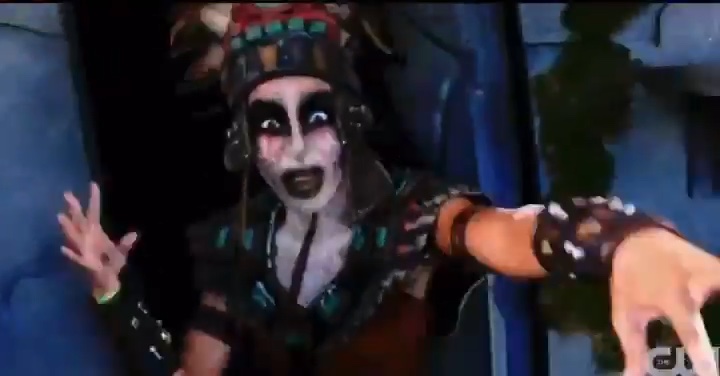
And if you ask a Mayanist, which we have done, to review the old show, he’d say, “Oh, yeah, you’ve got Aztec Inca olmec Maya, and you’ve got a whole bunch of different references there and stuff you just made up.” So fade out, fade in, it’s now 20 years later, we didn’t want to acculturate Mayan culture without actually being authentic.
We hired one of the world’s foremost Mayanist experts, who happens to be at the University of Texas who grew up in the Mayan culture. His parents were archaeologists. He is kind of Indiana Jones. He is our consultant on the show. So he came in very early on, and helped us to take Olmec and upgrade him into what would be a more classically Mayan head. When it came to the temple guards, we wanted it also to be tied more into: what would a Temple Guard/mythological character look like that might be the kind of person that we could use our Temple Guard.
So all of that was done in consultation with him—he sent us a bunch of reference material, some of which frankly doesn’t exist online, it was all his own personal research. So our costumes are very authentically Mayan. And the fact that they are scary is because when you ask people what they remember the show, it’s like, “The temple guards scared the shit out of me. Yeah, great. So the temple guards need to scare the shit out of people, right?”
100%. I love that. It’s cool from a cultural standpoint to listen to the amount of care you’re taking to depict these things in a historically accurate way, and to note you’re actively listening to what the fans really look for in Legends and kind of amp that up.
I’ll also give you this story: the whole idea of this, you internalizing what your memory is of the show, and then you internalized what you hoped would be coming back? I had that personal experience coming back to my summer camp—when I went back to see the lake I had to swim across to qualify to swim in the lake, it was a pond about this big? [extends arms out slightly] My memory of it was that it was giant.
When we built the moat, it was on a sound stage in Orlando. It literally was about fifteen feet wide and two feet deep. It was a plastic liner in a 2×4 box with water in it, with some dry ice—we didn’t even have a fogger, we literally had to put dry ice in the moat to get the smoke. We knew it couldn’t be that. It had to be something spectacular. We built a 10,000-square-foot lake that is 8 feet deep. So, they can’t stand up in the moat anymore. They have to actually swim.
Oh wow.
It’s serious; and when you watch the show, you’ll see—they’re exhausted by the time they get out of the moat.
I think that’s one of the things I’m looking forward to most—actually seeing more actual physical feats being done, and not in the confines of Nickelodeon Studios. It feels like it would be more exciting now that I am a grown-up.
I hope we delivered on that. On the other side, and I hope you resonate with this, we wanted it to be accessible, so you didn’t need to be a ninja warrior to be on the show. Anybody could be on the show.
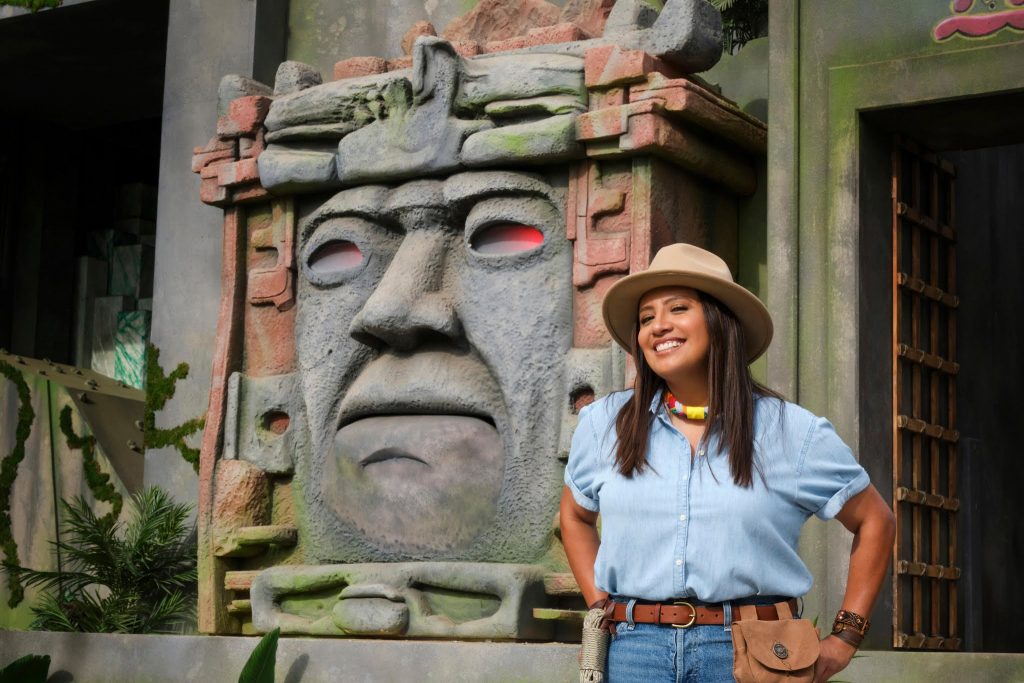
Why were kids so shit at the Shrine of the Silver Monkey? It’s three pieces with four orientations. Why was it so hard?
Do you remember taking your driving test?
I did. I failed it.
Why is so hard for you to park your car when you’ve practiced it a thousand times? Because there’s someone sitting there looking at you going, “OK, don’t screw this up! Hurry up! You’re taking too long! Nope, that’s not right. Sorry, you failed.” Now imagine doing that with $10,000 at stake, running around, out of breath, and at any moment, [a Temple Guard] is going to jump out and scare the shit out of you.
That’s a good point.
Now try to put the monkey together. I will tell you, the middle piece is the key, and it’s designed to do that to you. It’s designed to look like it goes in the other direction.
A lot of people miss that, I think. I understand the pressure of the lights, especially when you’re a kid. To expect a 10-year-old to do anything under pressure is ridiculous, but the added challenge is, “it’s tricky.” And [the audience doesn’t] know how tricky it is, because we’re over here.
You don’t get to practice an escape room before you do one, right? You don’t even get to walk through it. We actually walk [contestants] through the Temple so they know what’s what direction and where they’re going, to give them a chance to understand how the rooms work. We want success. This is largely known for being one of the hardest end games in the history of game shows. You have to work hard [to win.] It’s not easy.
Legends of the Hidden Temple premieres October 10 on the CW. As hard as it is to believe, this interview has been edited for length. Also, clarity.

